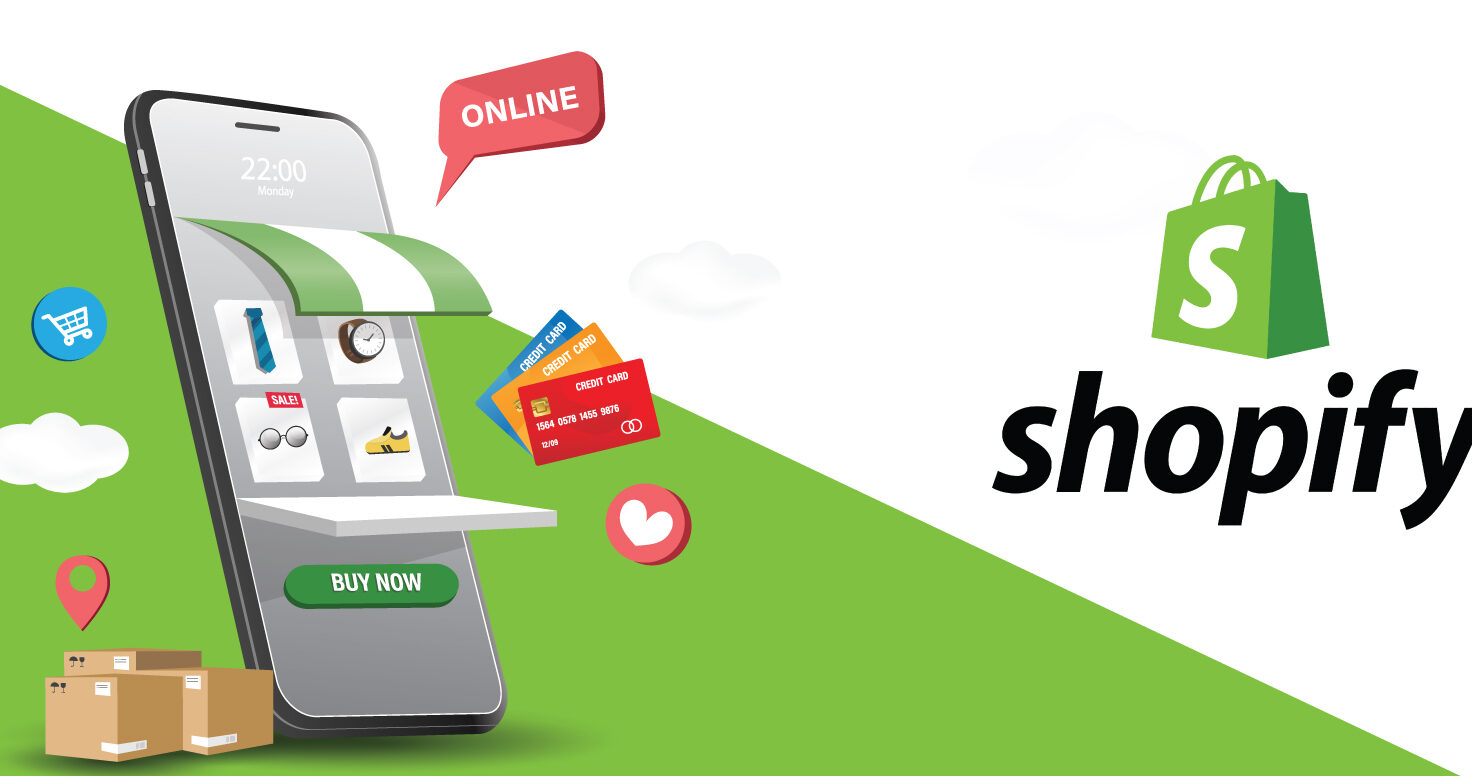
In today’s digital landscape, where every merchant strives for success, it is crucial to harness the full potential of online stores. That’s where Shopify custom development steps in, offering a realm of limitless possibilities such as setting up and customizing stores, tracking analytics, order and customer details, as well as marketing tools. While Shopify’s features provide a solid base, customization trends unlock their full potential and cater to specific B2B needs, keeping merchants competitive.
A. What is Shopify custom development?
Unlike standard setups that use pre-designed themes and plugins, custom development offers specialized solutions for online stores that extend beyond Shopify’s standard, giving businesses complete control over the store’s appearance, functionality, and user experience. With Shopify’s custom development tools, the possibilities are endless as businesses can have bespoke pages, features, and functionalities from custom-designed landing pages to specialized product configurators personalized to mix-match with their potential customers.
B. Which services does Shopify offer?
Possessing a comprehensive understanding of the resources and available features offered by Shopify, in a positive way, boosts up the potential access of custom development services to diverse demands and requirements.
1. Store set-up and customization
By selecting a theme and personalizing it with the logo, brand colors, and images, merchants can establish their store in a way that truly represents their distinct identity. To enhance convenience for customers, they can configure their shipping settings, and determine the delivery destinations and the corresponding charges, thereby allowing customers to preview shipping costs during the checkout process. As a final step in guaranteeing a seamless shopping experience, various options are created to place a test order from their store, ensuring that all components are functioning flawlessly.
2. Order management
Notably, Shopify’s order management system provides merchants with a comprehensive suite of tools to track and manage various aspects of their orders, which includes monitoring total orders, tracking individual order items, managing returns, and tracking fulfilled orders over time.
3. Analytics
Detailed reports on conversion rates, orders, and average order values aid in assessing marketing effectiveness and areas for improvement (store’s performance, including insights into total sales, sales channels, and website traffic). Analytics also highlights top-selling products, customer cohorts, and returning customer rates, and the ability to attribute sales to specific campaigns and explore session data by location, device, and social sources.
Shopify analytics | Source: Search Engine Journal
4. Marketing
Shopify’s marketing automation tools provide merchants with comprehensive support for both campaign management and automated workflows. Within campaigns, merchants can effortlessly track sales over specific periods. Customizing the time frame allows them to access detailed data on sessions, sales, orders, conversion rates, costs, return on ad spend (ROAS), cost per acquisition (CPA), click-through rates (CTR), average order values (AOV), as well as new and returning customers.
C. Why to choose Shopify custom development?
The surge in demand for Shopify developers is palpable, driven by a growing need for specialized skills in building, customizing, and optimizing online stores on the Shopify platform.
1. Offer unique design requirement
Shopify allows merchants to craft unique designs for their online stores using customizable themes and templates. Hire developers if the demand for more specialized design needs—such as advanced page layouts, unique user interfaces, or custom animations arises. Complex or niche design changes may require expert assistance, as these go beyond the standard options available within Shopify’s default themes.
2. Provide available sources of developers
Merchants looking for developers to provide custom designs and advanced functionality have multiple avenues to explore. One such option is the Shopify Experts marketplace, where certified professionals and agencies are listed after strict examination and testing. Referrals from industry peers and other businesses or developers from freelance platforms like Upwork, Fiverr, community forums, or LinkedIn are also valuable sources for connecting experienced professionals.
3. Optimize the backend process for faster loading
While Shopify offers robust features to optimize the backend process for faster loading, there are limitations to what it can achieve due to certain factors. Shopify poorly theme-optimized customizations or excessive code can slow the website’s loading speed. Ones with large product inventories may also experience slower loading times due to the increased data volume that needs to be processed. Reliance on resources such as scripts, or APIs, on the other hand, can introduce external delays if these resources are slow or unreliable. In the absence of customization, these factors may impede a website’s performance, sluggish loading times, and a degraded user experience.
D. Custom development trends for 2024
Moving into the early leg of Q2, it’s time to take a glance at the custom development trends and technologies that are promising to go big in the rest of 2024.
1. Offer a better user experience
Motion UI stands out as a front-end framework example that empowers Shopify developers to create fully responsive online stores and use predefined animations within a native app environment. Developers utilize Motion UI intending to make elements slide, spin, bounce, transition, and more, providing a dynamic and engaging shopping experience.
Though Motion UI gained traction in 2018, its adoption in Shopify has grown even further due to advancements in SASS libraries, making it one of the top web development trends for the platform in 2024.
However, in cases where Motion UI may not be compatible or beyond the scope of in-house expertise, merchants can consider hiring a third-party developer or agency specializing in front-end development. These experts can work closely with merchants to meet their specific needs like integrating custom animation optimizing mobile responsiveness and implementing custom solutions tailored.
2. Convert web application into Progressive Website Application
In the second quarter of 2022, over 58% of international web traffic came from mobile devices, excluding tablets. This growing reliance on smartphones and tablets for online activities underscores the importance of transforming web applications into progressive web apps (PWAs).
PWAs have even continued to gain strong momentum as they not only deliver exceptional user experiences but also offer advantages such as cost-effective development and straightforward maintenance for Shopify merchants. They also visually resemble traditional web pages while offering app-like functionality, offline access, faster loading times, and push notifications, ensuring a seamless and engaging shopping experience for customers
Moreover, with advancements in web technologies like HTML, CSS, JavaScript, and Web Assembly, today’s web app development companies can create powerful and feature-rich PWAs that don’t compromise on experience quality or security.
3. Optimize voice search
With intelligent virtual assistants like Alexa and Siri experiencing unprecedented market growth in 2019 and projected to continue expanding, according to an analysis by Grand View Research, the need for voice search optimization in e-commerce has never been more pressing. 27% of individuals use voice search on mobile devices. A Microsoft study reveals that 72% have used a digital assistant within the last six months. The growing popularity of voice-enabled technologies, such as Google Home and Apple HomePod, is further driving consumer expectations for voice search capabilities.
In the context of Shopify custom development, where customers use smart speakers, smartphones, and IoT devices to conduct voice searches, aligning and optimizing a Shopify store with voice search trends is crucial. Companies need to focus on improving product descriptions, metadata, and content strategy to cater to voice search queries, ensuring higher visibility and accessibility.
4. Enhance native cyber security
Cybersecurity, or the protection of data, networks, and systems from misuse, remains a major concern in 2024, affecting companies of all sizes. One of these ways is integrating application-based solutions like Google Authenticator, which helps to protect user accounts with multi-factor authentication. Security Operation Centers (SOC) may also be considered to provide real-time monitoring and incident response to emerging threats. Advanced monitoring and analysis, such as session recordings and heat maps, aid in detecting unusual activities like DDoS attacks or bot traffic.
Some applications’s features basically may lack the nuanced monitoring capabilities inherent in human oversight, keeping track of daily traffic trends and observing visitor journeys in particular and e-commerce experiences in general, helps businesses recognize when something is off. Consequently, there arises a need for businesses to engage in external security services. These services, equipped with specialized teams, offer comprehensive support for managing, upgrading, and adjusting security measures in an optimal and efficient manner.
By leveraging the potential of these fundamental characteristics embedded within Shopify applications, businesses have the opportunity to propel their electronic commerce enterprise to unprecedented levels of achievement. Capitalizing on these features resources not only to fulfill but surpass customer expectations, thereby fostering enduring prosperity within the fiercely competitive online marketplace. Reach us to apply one of the outstanding trends to boost your store performance.








